
Film noir is a cinematic term used primarily to describe stylized Hollywood crime dramas, particularly those that emphasize cynical attitudes and motivations. The 1940s and 1950s are generally regarded as the "classic period" of American film noir. Film noir of this era is associated with a low-key, black-and-white visual style that has roots in German Expressionist cinematography. Many of the prototypical stories and much of the attitude of classic noir derive from the hardboiled school of crime fiction that emerged in the United States during the Great Depression.

Peter Lorre was a Hungarian and American actor, active first in Europe and later in the United States. He began his stage career in Vienna, in the Austro-Hungarian Empire, before moving to Germany where he worked first on the stage, then in film in Berlin in the late 1920s and early 1930s. Lorre caused an international sensation in the Weimar Republic-era film M (1931), directed by Fritz Lang, in which he portrayed a serial killer who preys on little girls.
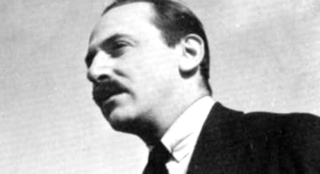
Nathanael West was an American writer and screenwriter. He is remembered for two darkly satirical novels: Miss Lonelyhearts (1933) and The Day of the Locust (1939), set respectively in the newspaper and Hollywood film industries.

The Enchanted Cottage is a 1945 American supernatural romance film starring Dorothy McGuire, Robert Young, and Herbert Marshall, with Mildred Natwick.

Nicholas Musuraca, A.S.C. was a motion-picture cinematographer best remembered for his work at RKO Pictures in the 1940s, including many of Val Lewton's series of B-picture horror films.
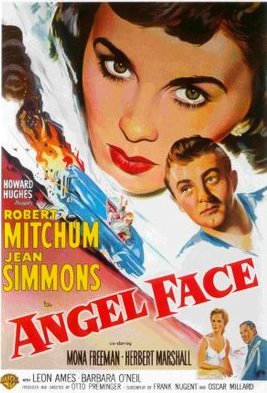
Angel Face is a 1953 American film noir directed by Otto Preminger, starring Robert Mitchum and Jean Simmons, and featuring Leon Ames and Barbara O'Neil. It was filmed on location in Beverly Hills, California.

Armored Car Robbery is a 1950 American film noir starring Charles McGraw, Adele Jergens, and William Talman.

John McGuire was a film actor during the period from the 1930s to the 1950s. In many of his early films he was a leading man; however, later in his career he played bit parts. McGuire appeared in Steamboat Round the Bend (1935); Charlie Chan at the Circus (1936);The Prisoner of Shark Island (1936); Stranger on the Third Floor (1940), sometimes thought Hollywood's first film noir; The Invisible Ghost (1941); Sands of Iwo Jima (1949); and Where the Sidewalk Ends (1950).
Harry J. Wild, A.S.C. was a film and television cinematographer. Wild worked at RKO Pictures studios from 1931 through the 1950s. In total Wild was involved in 91 major film projects and two extended television series.
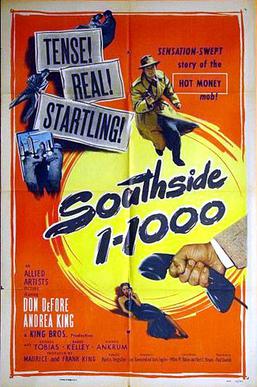
Southside 1-1000 is a 1950 semidocumentary-style film noir directed by Boris Ingster featuring Don DeFore, Andrea King, George Tobias and Gerald Mohr as the off-screen narrator. It is about a Secret Service agent who goes undercover and moves into a hotel run by a beautiful female manager, so that he can investigate a counterfeiting ring. The agent is up against hardened felons such as the gang member played by George Tobias, an unusual example of casting against type for the typically comic actor. It is one of Ingster's two films noir, the other being Stranger on the Third Floor (1940), which is considered the first noir film.
Frank Partos was a Hungarian-American screenwriter and an early executive committee member of the Screen Actors Guild, which he helped found.

Walk Softly, Stranger is a 1950 American romantic drama film starring Joseph Cotten and Alida Valli and directed by Robert Stevenson. Also regarded by some as either or both a film noir and crime film, it tells the story of a small-time crook on the run who becomes reformed by the love of a disabled woman.

Three Strangers is a 1946 American film noir crime drama directed by Jean Negulesco and starring Sydney Greenstreet, Geraldine Fitzgerald, and Peter Lorre, and featuring Joan Lorring and Alan Napier. The screenplay was written by John Huston and Howard Koch. It was produced and distributed by Warner Brothers.
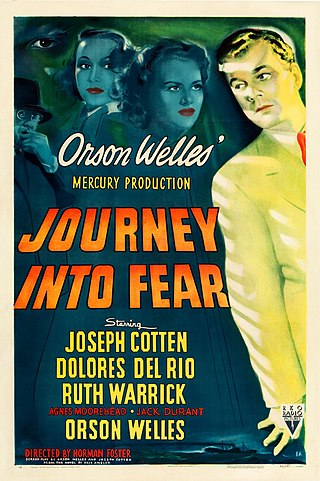
Journey into Fear is a 1943 American spy film directed by Norman Foster, based on the 1940 Eric Ambler novel of the same name. The film broadly follows the plot of the book, but the protagonist was changed to an American engineer, and the destination of his journey changed from France to the Soviet Union - reflecting the changes in the war situation since the original Ambler book was written. The RKO Pictures release stars Joseph Cotten, who also wrote the screenplay with Orson Welles. The Mercury Production was also produced by Welles, again uncredited.

Cry of the Hunted is a 1953 American crime film noir directed by Joseph H. Lewis. The drama features Vittorio Gassman, Barry Sullivan and Polly Bergen.
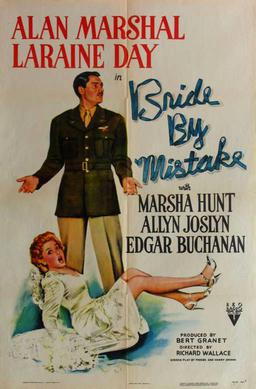
Bride by Mistake is a 1944 American romantic comedy film directed by Richard Wallace, and starring Alan Marshal and Laraine Day.

RKO Radio Pictures Inc., commonly known as RKO Pictures or simply RKO, was an American film production and distribution company, one of the "Big Five" film studios of Hollywood's Golden Age. The business was formed after the Keith-Albee-Orpheum theater chain and Joseph P. Kennedy's Film Booking Offices of America studio were brought together under the control of the Radio Corporation of America (RCA) in October 1928. RCA executive David Sarnoff engineered the merger to create a market for the company's sound-on-film technology, RCA Photophone, and in early 1929 production began under the RKO name. Two years later, another Kennedy concern, the Pathé studio, was folded into the operation. By the mid-1940s, RKO was controlled by investor Floyd Odlum.

Margaret "Talli" Tallichet was an American actress and longtime wife of movie director William Wyler. Her best-known leading role was with Peter Lorre in the film noir Stranger on the Third Floor (1940).
Harry Marker was an American Oscar-nominated film editor, who also worked in the television medium. Over the course of his 45-year career, he worked on more than 100 films and television shows. In 1946 he was nominated for an Oscar for Best Film Editing for The Bells of St. Mary's.
Boris Ingster was a Russian-American screenwriter, film and television director, and producer notable for his role in launching the film noir genre. In the 1930s he was a screenwriter on several films. He made his directorial debut in 1940 with the film noir movie Stranger on the Third Floor. In the 1950s and 1960s he shifted much of his attention to producing television series in genres ranging from drama to Westerns and spy thrillers.















